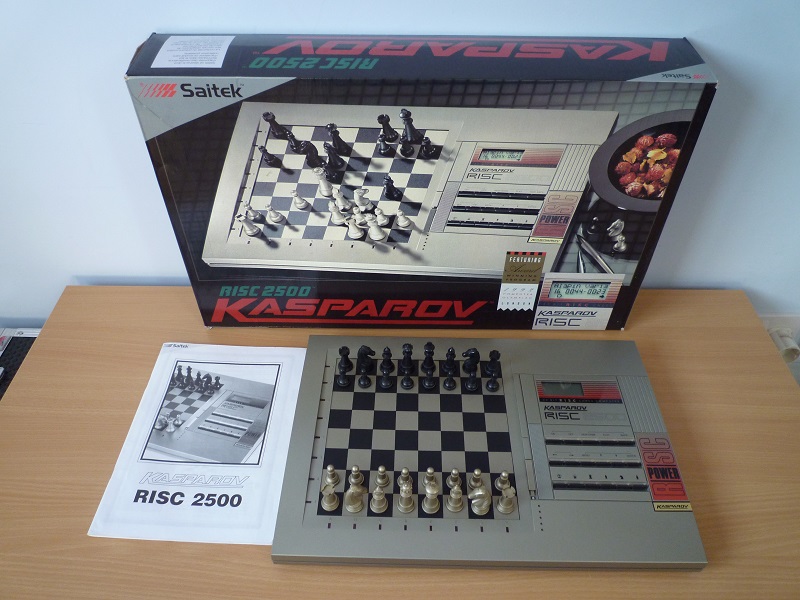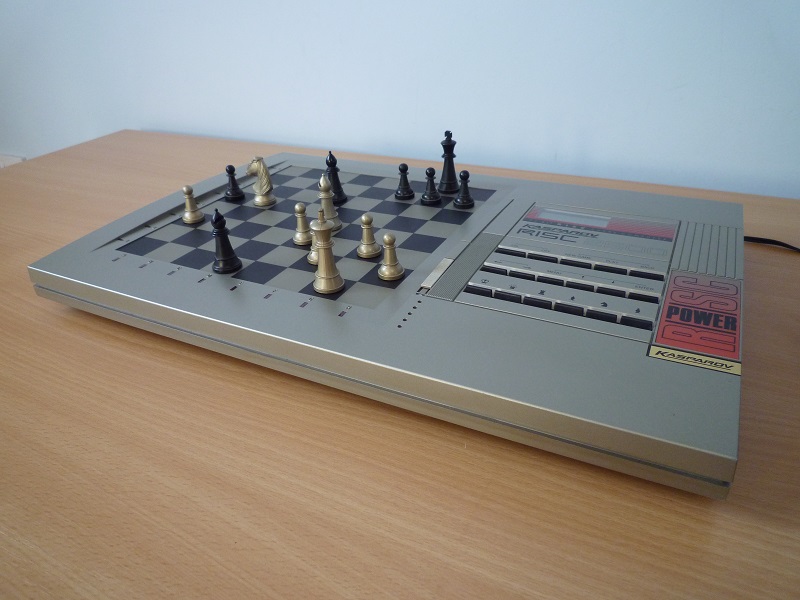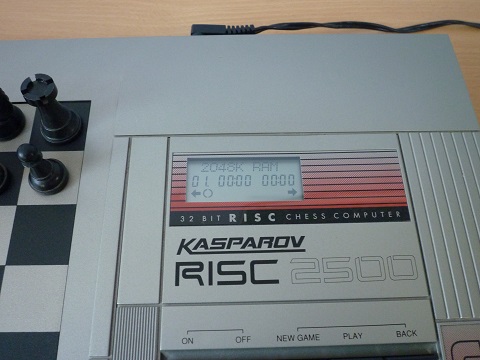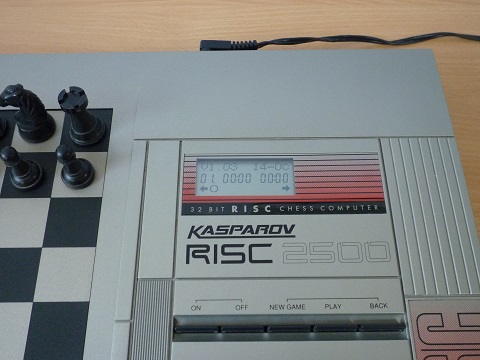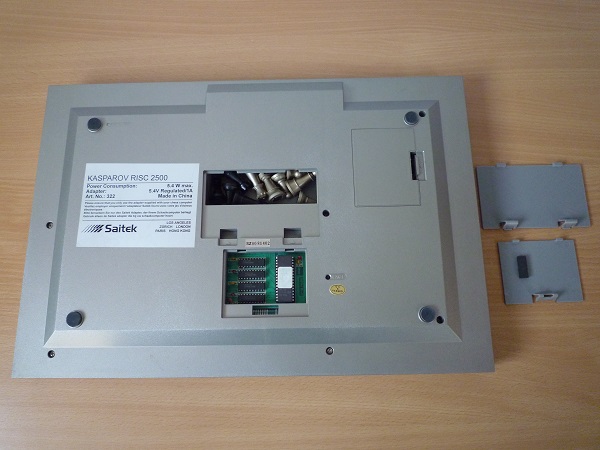|
A new generation of chess programs were emerging at the beginning of the 1990s. They arrived mainly via the PC route running on increasingly powerful hardware which threatened to match that of the top dedicated chess computers. When Selective Search first published a PC chess program rating list in April 1991 it was a sign that things were starting to change. Up to that point the ratings list had been dominated by luxurious wooden chess boards, cutting edge Intel processors and programs by Richard Lang and the Spracklens.
The 1990s were to see a broader range of programs running on the new RISC (Reduced instruction set computing) chips sometimes in plastic housings at much lower prices than the wooden boards, and all challenging for positions at the top of the rating list. When the first of this new wave of strong plastic chess computers, the Saitek Risc 2500, arrived in Autumn 1992 Eric Hallsworth hailed it as a breakthrough. Worthy of adding to his distinguished list - Sensory 9, Super Constellation, Par Excellence, Amsterdam, Mach 3, Portorose/Lyon/Vancouver - because of the leap in strength at a very competitive price. In fact from early testing the Risc 2500 slotted into 5th place on a rating of around 2330 Elo, at the time.
The Risc 2500 contained The King chess program of Johan de Koning which had been vying for
No.1 spot in the PC Ratings and had finished first (equal) in the 1992 World Computer Olympiad. The program was housed in an attractive silver, black and red plastic case. Attention to detail was evident throughout the design with many useful features including a very informative LCD display. The hardware a 14 MHz 32 bit RISC processor, 128 Kb program ROM, 128 Kb RAM including hash tables with an upgrade to 512 Kb RAM (and later 2Mb RAM) promised. At £399 the price was considerably lower than most of the strongest machines reaching the market in the late 1980s and early 1990s.
The King program is known for its sharp positive tactical style which should show up well at Active Chess (30 minutes per game). However my Risc 2500, with the v1.03 program and 2Mb RAM, did not perform very well in Strong Group One as you can see from the games below. It played on the default settings including expert strength and normal style.
|
